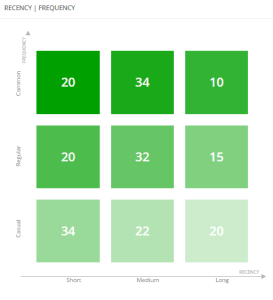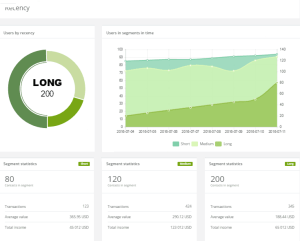 Fact: bulk emails don’t work. You prepare a newsletter, add some specials, some articles, Customer Service phone number and press “send to all.” A few days after, you check stats (expecting OR to be at least 40%) and oops-a-daisy: OR=5%, CtR=0,8%. It’s not even because the customers are pickier these days. Of course, we have a group of active prosumers, who won’t buy the recommended X smartphone model no matter how hard you try unless they want to, but they’re not so strong in numbers to change the overall target group.
Fact: bulk emails don’t work. You prepare a newsletter, add some specials, some articles, Customer Service phone number and press “send to all.” A few days after, you check stats (expecting OR to be at least 40%) and oops-a-daisy: OR=5%, CtR=0,8%. It’s not even because the customers are pickier these days. Of course, we have a group of active prosumers, who won’t buy the recommended X smartphone model no matter how hard you try unless they want to, but they’re not so strong in numbers to change the overall target group.
It’s mostly the matter of adjusting the marketing content, and it’s intensity to users engagement level, her income, and lifestyle. Good news is that you don’t have to be Nostradamus to predict users’ behavior and needs. Many marketing automation platforms provide you with detailed behavioral profiles, and users’ behavior analysis (current and previous) allows for predictive marketing usage. However, software developers have another ace in the hole. This ace’s name is RFM model, and it helps you in the complex database (or its part) analysis, and thus it helps in detailed segmentation and advanced personalization.
What Zero Moment of Truth means to your business? Download free ebook and find out
Short form RFM stands for Recency – Frequency – Monetary Value. Those variables are used in RFM profile analysis. Let’s take a closer look:
Recency – time from the last purchase. It helps you classify leads as those who made a purchase in a long, medium or short period. It’s obvious that all leads are important, but the experience tells us, that those who bought something recently are more willing to make another purchase.
Frequency – how often customer buys. With this variable, you can divide your users for casual, regular and common buyers. What’s important, we can track number and value of purchases in these three sectors, and thus apply some extra personalization to your content. Divide your offers according to customers behavioral patterns: send rare and exclusive offers to those who buy less often but spend more, and weekly newsletters with daily discounts to those who make smaller purchases, but on a regular basis.
Monetary Value – literally speaking, it’s the amount of money left by a customer in a store. The same group of clients that you already divided concerning purchase recency and frequency you can also divide according to how much they spend in your store. Again – you’ll receive three groups: Savers, Mediums, and Spenders. In the real life, you can use this data to achieve better control over customers’ behavior. By recognizing savers as those who buy more frequently, and by learning that “mediums” spend almost as much as spenders, you can adjust the email or banner content to all customers’ needs.
RFM variants
The described customer behavior analytic model can be modified to answer different businesses’ needs.
RFD Model – Recency, Frequency, Duration instead of Monetary Value, this model checks and analyzes time spent on the website. Works well for those who need to know how long the user read the articles.
RFE Model – Recency, Frequency, Engagement it’s the extended version of the RFD model. The last variable is users’ engagement.
RFM-I Model – Recency, Frequency, Monetary Value – Interactions it adds the interactions to the basic version. It can be used to measure, for example, the efficiency of marketing campaigns.
 What else can RFM do, and why you should use it?
What else can RFM do, and why you should use it?
RFM analysis is not only about the plain data and lead distribution. The decent software allows us for further work with pre-prepared data. The simple and elegant solution is to combine sets of variables in the matrix and comparing sectors. From this point, there’s only one small step to preparing extremely detailed target groups, for example: “Spenders, who buy with medium frequency, but recently made one bigger purchase,” or “new clients, who carefully bought one, rather cheap product to check the quality of your service.” For the first group, you can prepare a deluxe offer of complimentary service, for the second one, you can run an educational lead nurturing cycle so they can become loyal, long-term customers.
Who else uses RFM?
Besides te obvious addressees of this method, like ecommerce or B2B owners, RFM also has less apparent fans. Online publishers use it to track users’ website engagement (by using one of the model’s variations they examine and analyze readers behavior, and their engagement). Also, non-profit organizations use it to spot people who are most likely to donate money according to their previous actions.
What’s your experience with this analytic method? Do you use it?

 Follow
Follow
















